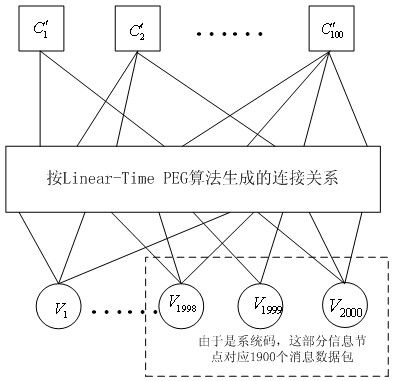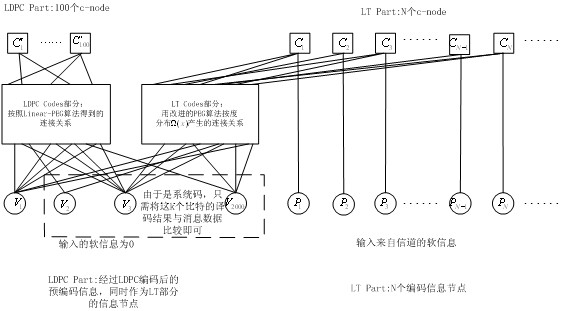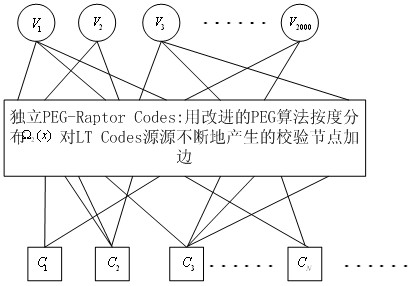Raptor Codes encoding/decoding method suitable for medium/short code lengths of additive white Gaussian noise channel
A technology of Gaussian noise and coding method, applied in the field of Raptor Codes coding and decoding, which can solve the problems of harmful independent information propagation and unreasonable degree distribution.
- Summary
- Abstract
- Description
- Claims
- Application Information
AI Technical Summary
Problems solved by technology
Method used
Image
Examples
Embodiment
[0066] A Raptor Codes encoding and decoding method for medium and short code lengths suitable for additive white Gaussian noise channels, including an encoding method and a decoding method;
[0067] Its encoding method is as follows:
[0068] 1) Consider that the sender wants to send Each data packet contains several data bits and includes a cyclic redundancy check code. The cyclic redundancy check code adopts CRC16, which is used as the basis for the decoder to judge whether the decoding is successful. use Indicates the message packet, subscript is the number of the message packet, . The encoding transmitter uses Raptor Codes for encoding, which is composed of high-rate LDPC codes as outer codes and concatenated LT Codes. Indicates the precoded packet generated after the message data packet is encoded by LDPC, ,use Indicates the encoding package generated after encoding by LT Codes, . The encoder generates an encoded packet as follows:
[0069] 2) First fol...
PUM
 Login to View More
Login to View More Abstract
Description
Claims
Application Information
 Login to View More
Login to View More - R&D
- Intellectual Property
- Life Sciences
- Materials
- Tech Scout
- Unparalleled Data Quality
- Higher Quality Content
- 60% Fewer Hallucinations
Browse by: Latest US Patents, China's latest patents, Technical Efficacy Thesaurus, Application Domain, Technology Topic, Popular Technical Reports.
© 2025 PatSnap. All rights reserved.Legal|Privacy policy|Modern Slavery Act Transparency Statement|Sitemap|About US| Contact US: help@patsnap.com



